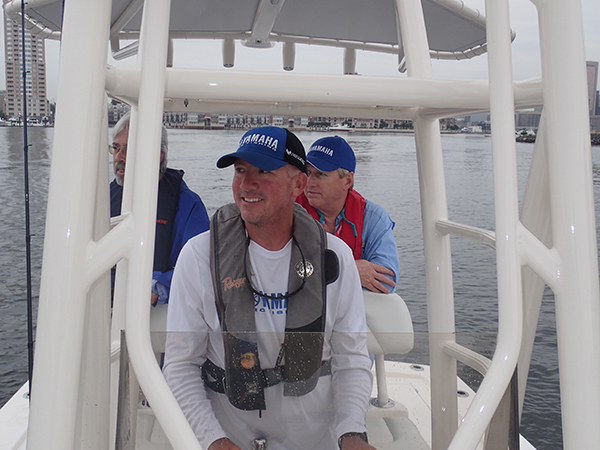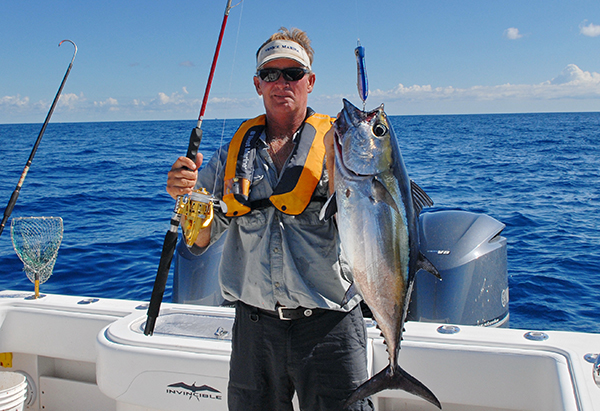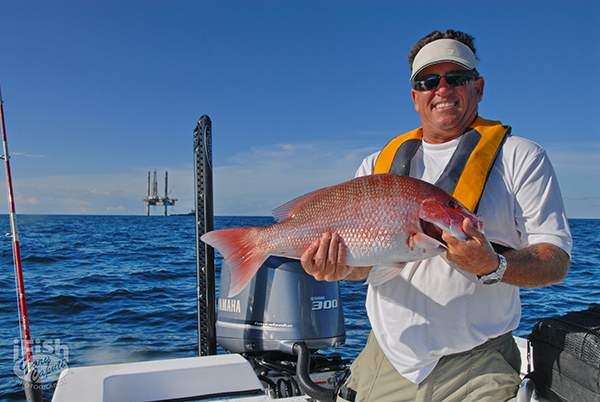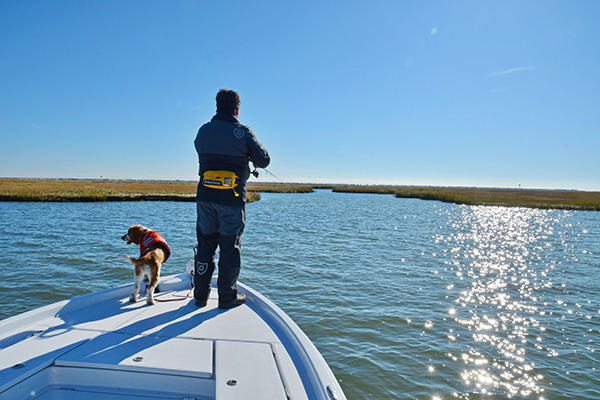The federal government, through the U.S. Coast Guard, sets and enforces regulations pertaining to Personal Flotation Devices (PFDs) requirements. The Coast Guard establishes standards and certifies PFDs, while the state governments create and enforce boating laws within their jurisdictions.
There are two basic types of PFDs. The Standard type has been around for over two hundred years and in its most basic form is a life vest filled with a buoyant material. If you received a safety package when purchasing your boat, it probably included a few bulky, rectangular shaped, bright orange PFDs of this type, and while they are USCG® certified, they simply aren’t something you would wear without being in an emergency situation. Improvements in flotation materials and design have made standard PFDs smaller, lighter and less obtrusive and there are special models for specific applications like watersports. The pros in favor of Standard PFDs are low maintenance, inherent buoyancy, versatility and a variety of designs enhancements like reflectors, pockets and D-rings for attaching a light and for the kill-switch lanyard for outboard motors. The cons are that even the most modern designs are still restrictive and can be uncomfortable for all-day wear.

In more recent years, inflatable PFDs have come on the scene and grown rapidly in popularity. Since gaining USCG certification they have become the preferred choice for many boaters. Inflatables are available in suspender-type or belt packs worn around the waist, and they come in two versions, automatic and manual inflating. The automatic type inflates within seconds of submersion while the manual requires the wearer to pull down on a bright yellow handled lanyard for activation. Both inflate using a CO² cartridge that threads into the arming mechanism. They can also be inflated manually through a blow tube hidden inside the outer covering. The manual type is best for use aboard personal watercraft, kayaks, canoes or paddle boards because automatics can inflate if they get wet even if it is not lifesaving situation. The pros in favor of inflatables are all-day comfort and they are far less restrictive when engaged in any type of activity. The straps are adjustable to fit most adults and most have a D-ring to clip a boat’s kill switch lanyard when driving. The cons are they require regular inspection to make sure they are functional (a clear window allows you to do that at a glance), close inspection of the arming mechanism for corrosion at least annually, and the replacement of the CO² cartridge every couple of years. Rearming kits are not inexpensive. Inflatables are not suitable for use on infants, children or youths under 90-pounds. (More on that later) Since inflatables became readily available, they have been credited with a significant increase in boat owners and their passengers wearing PFDs whenever they are on the water.
There are five USCG certified PFD categories that can pertain to recreational boats and it’s not a bad idea to review them all to have a better understanding of how they might apply. (see sidebar) Unfortunately, the regulatory language is written in typical government bureaucratic speak and at times unclear. The basic Federal laws governing PFDs on recreational vessels require that there must be at least one USCG approved PFD on board for each person in serviceable condition and be readily accessible. Readily accessible for Standard Type PFDs (Type I, II, III) does not require occupants to wear them, just keep them in a location where they can be reached quickly if needed. Inflatable PFDs, which fall under Type V are only considered “readily accessible” if it is being worn, and that means occupants must wear an inflatable to be within regulation.

Basically, what you need to know is that Type I is for offshore applications and mostly applies to for-hire and commercial vessels, Type II applies to general inland boating use, Type III is general boating and other specialty uses as listed, Type IV pertains to throwable rescue flotation devices, and Type V covers all Hybrid Inflatable PFDs and a multitude of additional specialty devices.
When choosing adult PFDs for your boat you have the choice between Standard and Inflatable models. Consider the pros and cons of each and be sure to purchase PFDs that meet your intended use. If you use your boat as a tow vehicle for watersports, there are standard type vests designed and labeled for the sport for which they are intended. If you want PFDs that are more comfortable to wear for long periods of time, inflatables might be the better choice. Be aware that any PFDs you purchase carry an imprint stating they are USCG Certified under one of the approved types and stick with brands from recognized manufacturers. If a PFD does not have the USCG certification you can be found in violation, should you be stopped for a safety inspection.
PFDs for kids are a different ballgame altogether because size, fit and buoyancy rating are crucial, and those requirements change with body size. Kids PFDs areclassed as Infant (8 to 30-pounds), Child (30 to 50-pounds) and Youth (50 to 90-pounds). Infant and child-size models have head support to keep a baby’s head above water and facing up. In addition, they have a grab handle on the head support to help retrieve a child from the water and a crotch strap to prevent the PFD from riding up or the baby from sliding out of it. Youth-sized PFDs look more like an adult jacket and have several adjustment straps across the chest so a snug fit can be maintained. Proper fit of a standard PFD is of utmost importance for both children and adults. It should be snug around the chest, especially if purchased for watersports use.
Before you head out to purchase new PFDs, you should do a search online for the regulations for the state(s) where you will be boating. Most states have similar PFD regulations, and all require PFDs to be of an appropriate USCG Type for the intended use. What you should research closely are the laws regarding PFD usage as these regulations can vary with the type and size of the vessel, including personal watercraft, and in many states, the laws also cover non-powered vessels like kayaks, canoes, rowboats and paddleboards. For comparison, let’s take a look at some current New Jersey and Florida boating laws pertaining pertain to PFD use in state waters.

New Jersey:
- All vessels must have at least one USCG-approved wearable Type I, II, III or V PFD onboard for each person on board or being towed. All vessels 16 feet or longer, except canoes and kayaks, must also carry one USCG approved Type IV throwable device.
- All children 12 years of age or younger must wear a PFD whenever they are on a vessel that is underway unless they are in a fully enclosed, non-removable cabin.
- A personal watercraft may not be operated unless each person on board is wearing a USCG-approved Type I, II, III or V PFD.
- All PFDs must be in serviceable condition and readily accessible. The PFDs must be of proper size for the intended wearer based on body weight and chest size.
- A USGC-approved life jacket is required to be worn at all times outside of a cabin on a boat under 26 feet during the cold-water months, while in motion, from November 1st to May 1st.
Florida:
- Florida state law requires every vessel to carry one wearable PFD for each person on board.
- It is mandatory that all USCG-approved PFDs be readily and easily accessible. They may not be kept inside a plastic bag or protective covering.
- Inflatable PFDs are only considered readily available while being worn.
- All USCG-approved PFDs must be kept in serviceable condition. (This implies that every PFD must be
in optimal working condition to ensure its effectiveness in emergency situations.) - All PFDs must be worn in compliance with USCG labeling on the PFD regarding the weight and age of the wearer, activities it is suitable for, etc.
- All vessels 16 feet in length or longer must also additionally carry at least one USCG-approved throwable
(Type IV) PFD that is immediately available in case somebody should fall overboard. - Children under the age of six must wear a USCG-approved Type I, II or III PFD while on board a vessel
under 26 feet in length while the vessel is underway. (Underway is defined as anytime except when the vessel is anchored, moored, made fast to shore or aground.) - Children under 13 must wear a USCG-approved PFD in federal waters while underway unless below deck or within
an enclosed cabin. (Federal waters start three nautical miles from shore or where the Gulf Stream starts in the Atlantic and nine nautical miles in the Gulf of Mexico.) - Anyone being towed behind a boat must wear a Type I, II or II USCG-approved life jacket. Inflatables are not allowed for this activity.

As you can see, regulations may vary by state and it is up to the boat owner/operator to read, understand and comply with all boating laws, including PFD regulations for everyone on board. Yamaha Marine actively promotes wearing PFDs at all times when a boat is in operation. It’s a smart thing to do for the safety of everyone on board.
USCG PFD Certifications by Type
TYPE I PFDS / OFF-SHORE LIFE JACKETS: Best for all waters, open ocean, rough seas, or remote waters, where rescue may be slow coming. Abandon-ship lifejacket for commercial vessels and all vessels carrying passengers for hire.
TYPE II PFDS / NEAR-SHORE BUOYANT VESTS: For general boating activities. Good for calm, inland waters, or where there is a good chance for fast rescue.
TYPE III PFDS / FLOTATION AIDS: For general boating or the specialized activity that is marked on the device such as water skiing, hunting, fishing, canoeing, kayaking and others. Good for calm, inland waters, or where there is a good chance for fast rescue. Designed so that wearing it will complement your boating activities.
TYPE IV THROWABLE FLOTATION DEVICES: Throwable PFDs are flotation devices intended to be thrown to a person in the water, and include SOLAS ring buoys, non-SOLAS ring buoys, and throwable cushions. SOLAS ring buoys are intended to be carried on commercial vessels engaged on international voyages. Non-SOLAS ring buoys are intended for use on domestic commercial vessels. Throwable cushions and other throwable PFDs are intended for use on recreational boats.
TYPE V PFDS / SPECIAL USE DEVICES: Only for special uses or conditions. See label for limits of use. These include Hybrid Inflatable PFDs (which includes all currently available inflatables for recreational use), Canoe/Kayak Vest, Boardsailing Vests, Deck Suits, Work Vests for Commercial Vessels, Commercial Whitewater Vests, Man-Overboard Rescue Devices, Law Enforcement Flotation Devices.
USCG(R) is a registered trademark of United States Department of Homeland Security.
REMEMBER to always observe all applicable boating laws. Never drink and drive. Dress properly with a USCG-approved personal floatation device and protective gear. This document contains many of Yamaha’s valuable trademarks. It may also contain trademarks belonging to other companies. Any references to other companies or their products or individuals are for identification purposes only, and are not intended to be an endorsement. ©2024 Yamaha Motor Corporation, U.S.A. All rights reserved. Materials contained are intended to be used for general educational and informational purposes only. You are encouraged to seek the services of a qualified professional before utilizing or relying upon any information presented herein. While every effort has been made to ensure such accuracy of the information contained herein, Yamaha Motor Corporation, U.S.A. does not guarantee such accuracy, correctness, reliability or completeness of the information or anything related directly or indirectly to the use of this information in any way, and can’t be held liable for any errors in or any reliance upon this information.
Back to Blue Life
